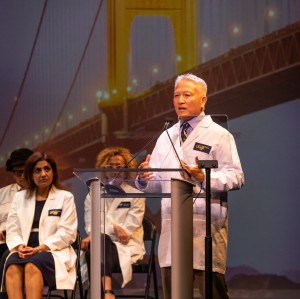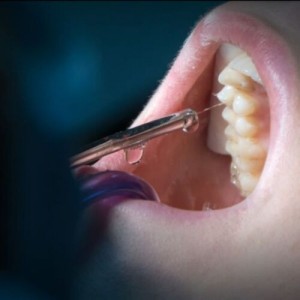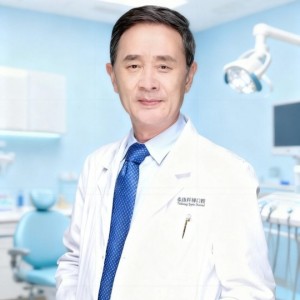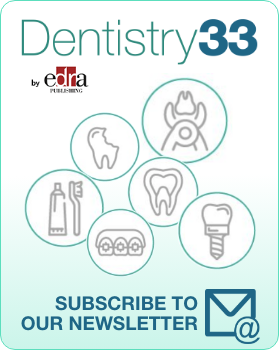
Interview with Doctor Jean-François Roulet - "The evolution of the Dentistry Profession during a pandemic: act locally, but think globally"
Dr. Roulet earned his D.D.S. from the University of Bern School of Dentistry in Switzerland in 1974 and immediately began his academic teaching career as a lecturer at the University of Bern before earning his Ph.D. at the University of Zürich in 1986. He has taught at institutions in Switzerland, Australia, Germany, Italy, and the United States. Roulet’s experience with the University of Florida College of Dentistry started in 1989 when he was a visiting professor. He was Associate Dean and Dean of the Dental School at Free University of Berlin, and chair of the Department of Operative and Preventative Dentistry and Endodontics at both the Free University of Berlin and Humboldt University Berlin.
For the nine years before joining University of Florida full-time in 2011, Roulet was director of the Department of Research and Development/clinical at Ivoclar Vivadent in Liechtenstein and served as a senior expert Professional Services at the company. Roulet initially served as the Department of Restorative and Dental Sciences chair upon his arrival at UF.
1) Let's start with an actual topic: Is it more difficult today to be a Prosthodontics at the time of Covid? What advice can you give to your colleagues?
If we look back, today we know much more than when I was a student. The profession goes more complex than before, but it doesn’t mean it is more complicated; the profession has changed a lot. We need to know a lot more these days than what dentists needed to know in the ’70s. When we look at the COVID-19, it wasn’t a significant change because we dentists have an excellent infection prevention history. With COVID-19, we didn’t have to change much; we just had to change the intensity of what we’re doing. Indeed, in mid-March last year, the university had to shut down completely, but we shifted to distance learning in one weekend. The university started enforcing social distancing, using devices that filter the air many times per hour, provided better masks, and we were back in business. They started to learn how to use that protective equipment treating emergency patients only and, since June, I’ve been teaching every day. Students are more efficient now because they work with an assistant who is another student. Now teaching is more straightforward than before. Now we have to use protective equipment and maintain social distancing, but not much has changed. The university has a suitable protocol; students and faculty have to be tested when they come to campus. If a student tests positive, they would be banned from campus and would have to quarantine. Due to an increase in testing and now vaccination, the Gainesville campus's infection rate is very low. I have colleagues in Japan who have built a strong evacuation system where they use a “tube” of around 10cm placed in front of the patients’ mouth, and all the aerosol is sucked away. My colleagues told me that no dentist got infected using this system. I have a colleague in Germany that has created an “air curtain” that places a halo around the head of the patient, and all the aerosol is blown away; therefore, it prevents the dentists from getting infected. Ultimately, we have learned to function, it has changed our reality, but dentistry has turned back to a new normality.
2) Compared to a few years ago, today, technology in dentistry is fundamental. What are the clinician’s and his/her team's role in the management of these new technologies?
Related to technology, if we look at the composites of the last century,they were very different from the ones we have today. The same thing happens with ceramics; when I was a student, we were happy to have something that looked similar to a tooth, but today we can perfectly mimic the optical properties of a tooth with the ceramics we are placing today. Another example is adhesive dentistry: it had changed entirely from what I learned when I was a student, we would prepare retention grooves and make things parallel, but now that is all gone since we have robust, reliable adhesive technology. Technology has been the driving force of dentistry.
3) Technique versus technology, which is the relationship today. Is it always the clinician's knowledge that determines the success of rehabilitation?
Technology is only as good as its application. For example, we have very sophisticated technologies to plan and place implants in a controlled situation; nevertheless, there are still implantologists who perform free-handed implantations. I once saw an excellent poster in a dental company that showed the interior of an airliner’s cokpit and said, “Professionals use checklists”. Experience counts, but we never do it fully free-handed. When it gets complex, we must do it controlled. We should do everything as controlled as possible to prevent errors, and of course, experience comes when we apply things very frequently. Dentistry is more than psycho-motor skills; it takes knowledge to apply the technology to clinical situations because I’ve never seen an ideal case in the clinic. Modifications have always to be applied to what is learned, even if done controlled within given parameters. Therefore, it is essential to apply the knowledge to a clinical situation. For instance, I always discuss adhesive technology with my students to select a specific adhesive over another one. The students need to know how adhesives work and problems that can come up, and if they have all the knowledge, they will apply it to the clinical situation as an educated decision. My mantra is to act locally but thinks globally.
4) What will be the next revolutions brought by technology in Dentistry?
There would be many changes, and there are different areas. At the moment, we received a boom in computer technology, if you add artificial intelligence and computers in what we’re doing, not only for billing, you can see that we would have robotic placement of implants; therefore, the computer does the job with less variation than we do. Also, if a robot cuts the teeth for a bridge and adds artificial intelligence to that, diagnostics would be much more refined, especially when it comes to monitoring and interpreting 3D x-rays. Moreover, we are moving now to intraoral “light-microscopy” (optical coherence tomography), where you can look into the teeth in real time and then analyze this data and see where things have changed. Biology can be added to it as well; having a decoded genome will completely change Medicine and move it away from what we’re doing today, which I call reactive care as compared to to proactive care, meaning that I determine the risk a person has of getting sick and teach them how to avoid or minimize the risk to potentially do not get sick. Therefore, dentists would move from being a teeth-repair professional to a health coach, which would anchor ourselves within the medical profession. We as dentists should stay within the medical profession where we have an incredible potential because, for example, many diseases can be identified by markers found in the saliva, and we as dentists see patients more often than physicians do; therefore, we would be able to detect earlier that something is wrong with the patient. Suppose we combine this ability with computer technology and artificial intelligence. In that case, we could have dentists implanting devices in the oral cavity that would tell the healthcare professional that something is moving in the wrong direction with the patient’s health and act proactively instead of waiting until the patient is already in bad condition. I’ve got trained for the first few years the same way physicians are trained, therefore I have a reliable medical base and I think we should train students to understand Medicine as a whole rather than just the dental aspect.
5) Finally, a personal question. Your CV is impressive: among your professional goals achieved, which ones do you remember most proudly?
What’s important in my career is that I was fortunate to contribute a few mosaic stones to the dental knowledge mosaic as a research outcome. In addition, as a teacher, I’m very proud that I trained thousands of students, probably much more dentists, with continuing education. Besides, I’m proud that when I moved to Germany, together with some colleagues I created a school for dental prevention by sacrificing one of our dental school laboratories for technicians into a dental hygiene school, which was operated by the Berlin Dental Association. This institution is now training Dental Hygienists as well. Also, I was the founder and co-founder of four journals, and finally, I was the founder of three professional
 Read more
Read more
Editorials 10 October 2025
With proud smiles and crisp white coats, ninety-three learners from the DDS Class of 2029 and the International Dentist Pathway Class of 2028 marked the start of their dental careers at the UCSF...
Periodontology 10 October 2025
Continuous professional development (CPD) in Periodontology refers to the overall framework of opportunities that facilitate a life-long learning practice, driven by the learner-practitioner and...
TheraBreath, the #1 alcohol-free mouthwash brand in the U.S.*, has introduced a new line of dentist-formulated, clinically tested toothpastes designed to support professional oral care...
News 10 October 2025
New officers and trustees were installed at the Minnesota Dental Association’s Leadership Conference on September 19 in Minneapolis.
News 10 October 2025
Smartee Denti-Technology today announced that Professor Gang Shen, its Chief Scientist and Executive President of TaiKang ByBo Dental, has once again been named to the World’s Top 2% Scientists...










